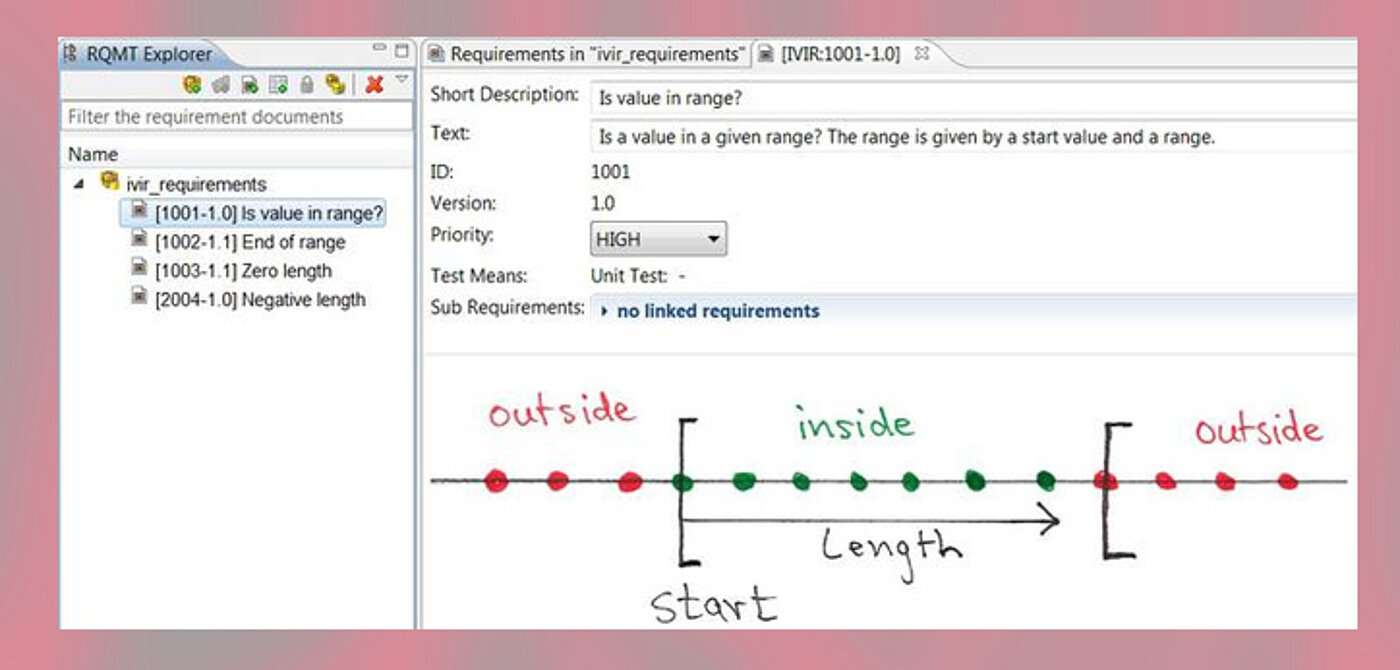TESSY features a built-in requirement management system that allows you to create requirements and link them to test cases. Reports generated by TESSY reveal, if there are requirements without tests at all, or with unexecuted tests, or with failed tests. Requirements traceability allows to estimate the impact of a requirement change. Requirements can also be imported from Requirement Management Systems (RMS) like DOORS in various file formats, e.g. ReqIF. Validation results can also be exported back to the RMS via ReqIF.
A special integration exists with Polarion; it allows to export test cases by a click of the mouse to Polarion. The linkage of requirements to test cases then takes place in Polarion.



